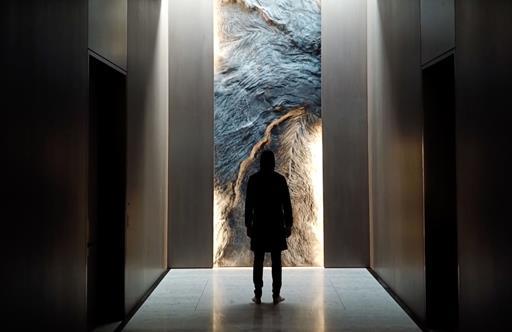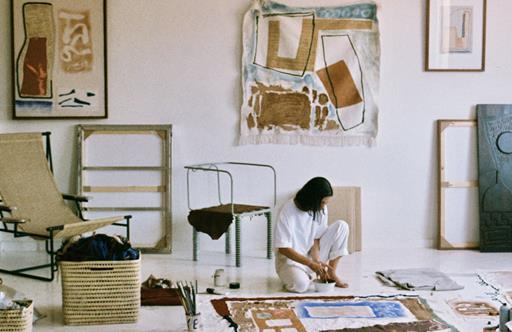Beijing’s Changing Face
In conversation with artist Xu Yong, much-feted contemporary artist who captured the ‘Vanishing of the Hutongs’ on photograph
All manner of sins may be committed in the name of progress. In some cases, of course, progress is actually achieved: the Romans, for example, were definitely onto something with the invention of central heating and indoor plumbing – even if it lacked the traditional charm of a bearskin rug or drawing water from a well or a stream.
In Beijing this has seen the architectural face of the city transformed with major building projects and high-rise structures taking the place of the traditional hutong districts with their narrow lanes and single-storey courtyard houses. The sense of loss is a very real one, and people have sought to come to terms with it in different ways.
Noted restaurateur David Yeo memorably sought to immortalise them in his Hong Kong fine dining restaurant Hutong, using reclaimed and salvaged materials from the original hutongs to brilliant effect. Others, like Beijing-based photographer Xu Yong, have documented the changes to leave a visual record of the city that was.
We spoke to Xu on the eve of a major retrospective at the Hua Gallery in London to hear more about his relationship to the hutongs and his fascinating but enigmatic images.

Hutongs have been part of residential life in Beijing for many hundreds of years. How would you describe their cultural importance?
‘Hutong’ is not originally a Chinese word, but a word taken from Mongolian, which means ‘water well’. Seven hundred years ago, Mongolians from Northern China occupied almost the whole Han ethnic area. They established the Yuan dynasty in ancient China and set the Peking [Beijing] central area as the capital city called ‘Yuan Da Du’. Since then Beijing has been the capital city in China.
Unlike the Forbidden City, the hutongs represent the culture and lifestyle of traditional Beijing citizens
Xu Yong, ArtistMongolian people lived nomadic life in northern grassland and often gathered to live near water sources. The royal Yuan family built their palace in the central area of Yuan Da Du, according to the culturally advanced Han ethnic town planning, and then drew tic-tac-toe pattern roads around the palace. Moreover, feudal residences were located on both sides of the road. The roads and houses were completely designed according to the Han ethnic cultural tradition’s etiquette system. These traditional Chinese courtyard houses, or siheyuan, became famous, and the roads were named hutongs after the Mongolian pronunciation.
Since the Yuan Dynasty, hutongs and the Forbidden City were preserved over five dynasties until now. Unlike the Forbidden City, the hutongs represent the culture and lifestyle of traditional Beijing citizens, the common people. As a result, the hutongs can be seen as a continuation of Beiing’s history and culture.
What specific historical events and modern developments have led to the demolition of the hutongs?
As with every important city in the world, Beijing’s urban changes are an enchanting story. Since the beginning of last century, the traditional courtyard houses and hutongs gradually lost their importance once the Qing dynasty was overthrown during the Chinese bourgeois revolution. The members of the Royal family started to rent out or sell courtyard houses due to the loss of their income, and the pattern of residence in the hutongs started to diversify and became disordered.
A lot of hutongs and courtyard houses were mercilessly torn down
Xu Yong, ArtistOne hundred years have passed since then, and Beijing has gone through many vicissitudes. During the Cultural Revolution, the hutongs and courtyard houses as historical and cultural heritage were seriously damaged by vandalism. In the late 1980s, many Western-style and modern design buildings were established and developed. A lot of hutongs and courtyard houses were mercilessly torn down and replaced by various cement and glass buildings driven by a totalitarian culture, which is based on lack of respect for the traditional Chinese historical culture. The number of hutongs in Beijing was severely reduced from more than 3,000 to 200 today, and is continually decreasing.

Do you feel that loss personally?
If Beijing looked like a perfect classic oil painting in 1949 when the People’s Republic of China was founded, the colour of this painting has now faded. It’s not an exaggeration to say that the history of Beijing’s urban construction development is a history of destruction of Beijing’s historical and cultural heritage. Sadly, the disappearance of hutongs for Beijing is like a person losing their genetic makeup or their ancestors.
Did you feel you had a mission to immortalise the hutongs through your photographs before they vanished forever?
I did not feel it a mission when I shot the hutongs around 20 years ago, nor do I today. I chose the hutongs as my subject because of my special feeling for them, which might be related to the history and reality of Beijing. In '101 Hutong Portraits', the photos were taken from early summer 1989 to the spring 1990. I was using the images of the hutongs to describe several Beijing stories I had in my mind.




















